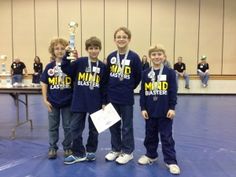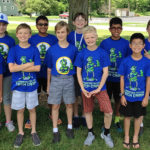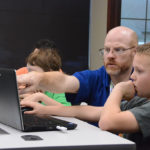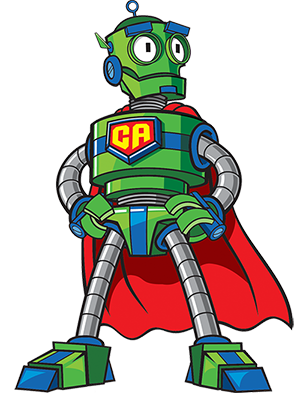It is mid-November, and this past weekend, our Classroom Antics sponsored team, the MindBlasters, took home the Best Robot Design award. Now that the event is over, I wanted to recap my thoughts from this competition. It is my hope this blog helps make other parents aware of what to expect.
I was one of four dads that helped mentor our kids through this big complex competition called FIRST LEGO League. This competition can be overwhelming, even for adults. And since our kids were 8-9 years old, they were also the youngest, which added even more challenges.
Age of Participants
FIRST LEGO League (FLL) is made for kids 9-14 years old. If your child is turning 9 during the competition year, they can qualify for being 9 years old.
Most kids in this competition were 11-14 years old. Being 9 is a big challenge. Kids that young do not usually have the attention span for all the tasks needed to do well. This doesn’t mean they shouldn’t compete. It just means you could have challenges getting your kids to focus on their project work.
FLL is a Lot of Work
I can tell you that I learned that FIRST LEGO League is not for the faint of heart. There is a lot of work. Distinctly three different scoring components exist for this competition.
- Core Values – Kids must demonstrate and discuss the FLL Core Values to judges. Also, they need to explain how they use them in everyday life.
- Project – For 2012, the project was called Senior Solutions. Our kids were tasked with finding a problem that seniors have and finding a solution. Teams must interview many people to research the problem, work together as a team to find multiple solutions, and finalize a solution. A poster board should also be made to illustrate the progress they made during the project.
- Robot Challenges – This is the area that most people think of when they think of robotic competitions. Unfortunately, the scoring is not weighted heavily in this category like most would think. Our MindBlasters team was EXCELLENT in this category, placing 2nd in a field of 7 teams! Very proud of our team on what they accomplished there.
To our surprise, even though we got 2nd place in the Robot Challenges, we didn’t place high enough to move on to the regional competition. We needed to spend more time working on Core Values and the Senior Solutions project. These are a big part of the competition. Consequently, I that I wish we understood better when we began the process in August.
FLL and Junior FFL are Very Different
FIRST has a Junior FIRST LEGO League. This is a competition for younger LEGO lovers who want to eventually become involved in the more-exciting FLL competition. They use LEGO WeDo kits instead of LEGO Mindstorms kits, and the age range is closer together.
Robot Building Guide
When building your robot during the competition, you must use one and only one robot base. That means that you can only use 1 NXT brick and 3 motors. When we first started, we built 3 different robots thinking we could pull one off the board and put another one on. This is not allowed. You must use the same NXT brick during the competition.
James Jeffrey Trobaugh wrote a nice book about winning FLL robot competition design. Don’t be afraid to try out these robot models. The book also has great references on how to attack multiple challenges by zones.
Final Thoughts About What I Learned from First LEGO League
With all this being said, I recommend parents try to get involved with FLL. I highly recommend taking a robotics class first so your kids know how the LEGO Mindstorms kits work. And prepare yourself for the time commitment needed. You should meet with your team 3-4 hours per week, each week, from September to mid-November. If you know someone who has participated in an FLL competition before, recruit them onto your team! Their knowledge is so valuable to your success (and happiness) when you compete. When you are ready to move forward, learn how to start a FIRST LEGO League team!







